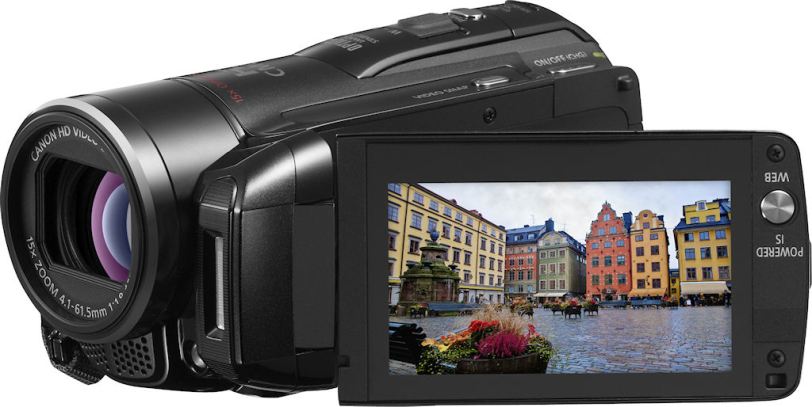Recently I shot a short film, “Thank You Dr. King” (currently in post-production), on the Canon Vixia HFR10. Let me start by saying that I purchased the Vixia in 2010 to capture timeless moments of a California business trip. I was traveling alone to several cities throughout SoCal presenting my portfolio and I wanted to have visual memories to reflect on the ambitious endeavor. Although I used the camera on the trip, it was more like an occasional capture here and there. With “Thank You Dr. King”, I wanted a different experience. I spent time researching and writing the short film, then decided to take the Canon Vixia along for a trial run. Although financing for TYDK was what I like to call a “Ramen-Budget”, I knew what I wanted to capture and that gave me a blueprint for using the Vixia HFR10. The night before the shoot, I fully charged the battery, wiped the memory, packed my Joby gorilla pod, and was ready to go.
Mobility – The Vixia is a handy little camera. Weighing only about 10 ounces, the camera is extremely mobile and fits into a neat little pelican case that’s 2.4 x 2.5 x 4.9 in dimension. When I arrived at the historic Auburn Avenue in Downtown Atlanta, I was a little intimidated by the big news crews with their large cameras but one advantage I had was my mobility. While camera guys collapsed and flipped open their sticks (tripods), adjusted lighting mounts, and pulled focus, I just whipped out my little camera and shot. The Vixia is very mobile and that was my advantage.
Image Quality – A big disadvantage of the Vixia is the image quality of moving images. The camera boasts an image resolution of 1080/60i at 24 fps but that’s mostly achieved during stationary shooting which sort of nullified my mobility advantage. When shooting moving images, the camera has a tendency to reduce image resolution from true HD quality.
Battery Life – I also ran into an issue with the battery life during the shoot. The amount of media space (8GB internal/ 32GB flash) does not match up to the 4 hour extended battery life available in the camera. While taking a lunch break at the local China Wok, I charged the camera and that gave me an additional hour of shooting time.
Lighting – Another drawback is the image quality in low light. The Vixia does not have an auxiliary lighting mount, so if you want the best image quality you have to shoot your exterior and interior shots in bright well-lit environments. For “Thank You Dr. King,” a majority of the action occurred outdoors as I captured the heartfelt march on Auburn Avenue and interviewed attendees.
Audio – The audio settings of the Vixia are a challenge. The camera has a 2-channel audio output for an auxiliary mic and an input jack for headphones to monitor sound while you are recording which is helpful but without a controlled environment such as a set or soundstage, you run the risk of having your shots filled with interfering background noise.
All in all, I enjoyed shooting with the Canon Vixia. The experience was exhilarating, especially coming off of a 3-month stint working in the office of a big budget television production. I recommend investing in a mic plug-in and some standalone lighting to accompany this camera. There’s nothing like the feeling of watching your vision come to life.
For more information about the Canon Vixia HF R10, visit http://bit.ly/15gRZt2.
To see “Thank You Dr. King,” a short film by Erika Salter, go to www.youtube.com/salterent. Premiering this Black History Month in honor of the legacy of Dr. Martin Luther King, Jr.
- Photo still from SalterENT’s short film “Thank You Dr. King”
- Erika Salter ready for live action shots with the Canon Vixia
- Canon Vixia review
Related articles
- Canon introduces new CameraAccess app that streams video to your smartphone (intomobile.com)
- CES 2013: Canon PowerShot N has innovative design and Wi-Fi (news.consumerreports.org)
- Listec Promptware Teleprompters Adds 58mm Support (themactrack.com)
- Shooting video: Camcorder vs. DSLR and iPhone (framework.latimes.com)





Pingback: SEG premieres “Thank You Dr. King” in honor of Black History Month | Salter Entertainment Group